Ditapis dengan
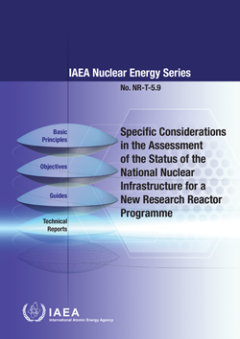
Specific Considerations in the Assessment of the Status of the National Nucle…
The assessment approach described in this publication provides a comprehensive means to determine the status of the infrastructure conditions relevant to all issues detailed in IAEA Nuclear Energy Series No. NP-T-5.1, Specific Considerations and Milestones for a Research Reactor Project. This approach can be used by any interested Member State for self-assessment to identify weaknesses and to d…
- Edisi
- -
- ISBN/ISSN
- 978-92-0-112520-0
- Deskripsi Fisik
- 75 pages
- Judul Seri
- -
- No. Panggil
- -
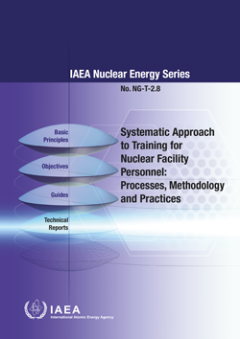
Systematic Approach to Training for Nuclear Facility Personnel: Processes, Me…
Training is an important tool to achieve and maintain the required competence of personnel working in nuclear facilities. Effective training and qualification of personnel are necessary for the achievement of high safety and efficiency standards in nuclear facility performance. Training and qualification combined is a key feature of the integrated management systems of nuclear facilities. It is…
- Edisi
- -
- ISBN/ISSN
- 978-92-0-113320-5
- Deskripsi Fisik
- 171 Pages
- Judul Seri
- -
- No. Panggil
- -
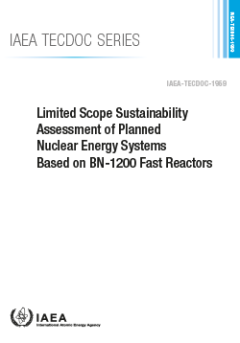
Limited Scope Sustainability Assessment of Planned Nuclear Energy Systems Bas…
An example of a limited scope INPRO sustainability assessment of an innovative nuclear energy system used the BN-1200 fast reactor as a case study. The INPRO assessment was performed at the full-depth criteria level and helped to identify actions for sustainable long term deployment of sodium cooled fast reactors. The publication describes the application of the INPRO sustainability assessment …
- Edisi
- -
- ISBN/ISSN
- 978-92-0-109121-5
- Deskripsi Fisik
- 100 Pages
- Judul Seri
- -
- No. Panggil
- -

Technical Reports Series No. 369: Management for Excellence in Nuclear Power …
The objective of this report is to facilitate a recognition of priority management issues which, when not adequately recognized and addressed, can result in problems in operational performance at nuclear power plants. It provides a number of effective practices, reflecting the positive experience of nuclear power companies, that have prevented or corrected problems related to selected managemen…
- Edisi
- -
- ISBN/ISSN
- 92-0-103194-7/0074-1914
- Deskripsi Fisik
- -
- Judul Seri
- -
- No. Panggil
- -
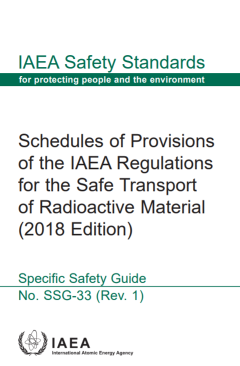
IAEA - Safety Standards Series No. GSR Part 5 : PREDISPOSAL MANAGEMENT OF RAD…
This Safety Requirements publication applies to the predisposal management of radioactive waste of all types and covers all the steps in its management from its generation up to its disposal, including its processing (pretreatment, treatment and conditioning), storage and transport. Such waste may arise from the commissioning, operation and decommissioning of nuclear facilities; the use of radi…
- Edisi
- -
- ISBN/ISSN
- 978–92–0–111508–9 / 1020–525X
- Deskripsi Fisik
- 56 p
- Judul Seri
- -
- No. Panggil
- -
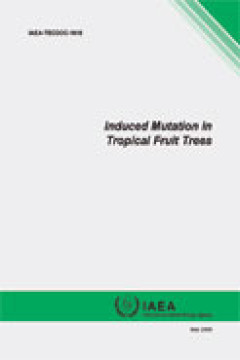
IAEA - TECDOC Series No. 1615 : Induced Mutation in Tropical Fruit Trees
This publication is based on an FAO/IAEA coordinated research project (CRP) and provides insight into the application of induced mutation and in vitro techniques for the improvement of well known fruit trees such as citrus, mango, avocado and papaya, as well as more exotic fruit trees such as litchi, annona, jujube, carambola, pitanga and jaboticaba. The latter are of particular importance due …
- Edisi
- -
- ISBN/ISSN
- 978-92-0-102709-2
- Deskripsi Fisik
- 170 p
- Judul Seri
- -
- No. Panggil
- -
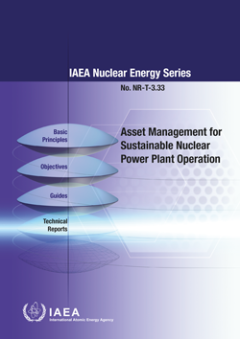
Asset Management for Sustainable Nuclear Power Plant Operation - IAEA Nuclear…
Asset management plays an important role in maintaining the competitiveness of nuclear power plants in a challenging and changing electricity market. The value of effective asset management is in providing support to those making decisions seeking the optimum level of financial performance, operational performance and risk exposure. This publication provides information on various methodologies…
- Edisi
- -
- ISBN/ISSN
- 978-92-0-126720-7
- Deskripsi Fisik
- 83 hal
- Judul Seri
- -
- No. Panggil
- -
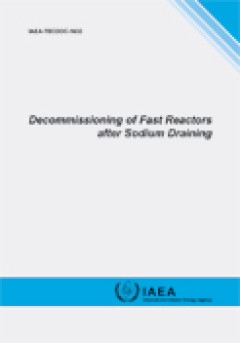
IAEA - TECDOC Series No. 1633 : Decommissioning of Fast Reactors after Sodium…
Decommissioning of fast reactors and other sodium bearing facilities is a domain in which considerable experience has been accumulated. This publication arises from an IAEA technical meeting convened to address decommissioning experience with fast reactors, in particular with regard to the decommissioning of components after sodium draining. Experience gained from the decommissioning of both ac…
- Edisi
- -
- ISBN/ISSN
- 978–92–0–111809–7 / 1011–4289
- Deskripsi Fisik
- 189 p
- Judul Seri
- -
- No. Panggil
- -
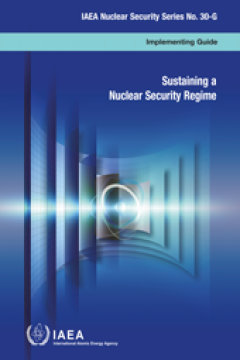
Sustaining a Nuclear Security Regime - Implementing Guide | IAEA Nuclear Secu…
This publication addresses the sustainability of all aspects of a national nuclear security regime, including those relating to nuclear material and nuclear facilities, other radioactive material and associated facilities, and nuclear and other radioactive material out of regulatory control. The publication is relevant for States that have established a nuclear security regime as well as for St…
- Edisi
- -
- ISBN/ISSN
- 978-92-0-111816-5
- Deskripsi Fisik
- 26 Halaman
- Judul Seri
- -
- No. Panggil
- -
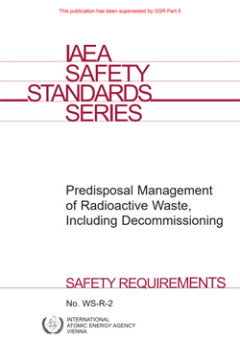
IAEA Safety Standards Series.Safety Requirements No.WS-R-2.Predisposal Manage…
This publication establishes safety requirements relating to the predisposal management of radioactive waste arising from: the operation and decommissioning of nuclear facilities; the application of radionuclides in industry, medicine and research; the processing of raw materials containing naturally occurring radionuclides; and the cleanup of contaminated sites. Safety requirements for the rel…
- Edisi
- -
- ISBN/ISSN
- 92-0-100300-5
- Deskripsi Fisik
- 26 Halaman
- Judul Seri
- -
- No. Panggil
- -
 Karya Umum
Karya Umum  Filsafat
Filsafat  Agama
Agama  Ilmu-ilmu Sosial
Ilmu-ilmu Sosial  Bahasa
Bahasa  Ilmu-ilmu Murni
Ilmu-ilmu Murni  Ilmu-ilmu Terapan
Ilmu-ilmu Terapan  Kesenian, Hiburan, dan Olahraga
Kesenian, Hiburan, dan Olahraga  Kesusastraan
Kesusastraan  Geografi dan Sejarah
Geografi dan Sejarah